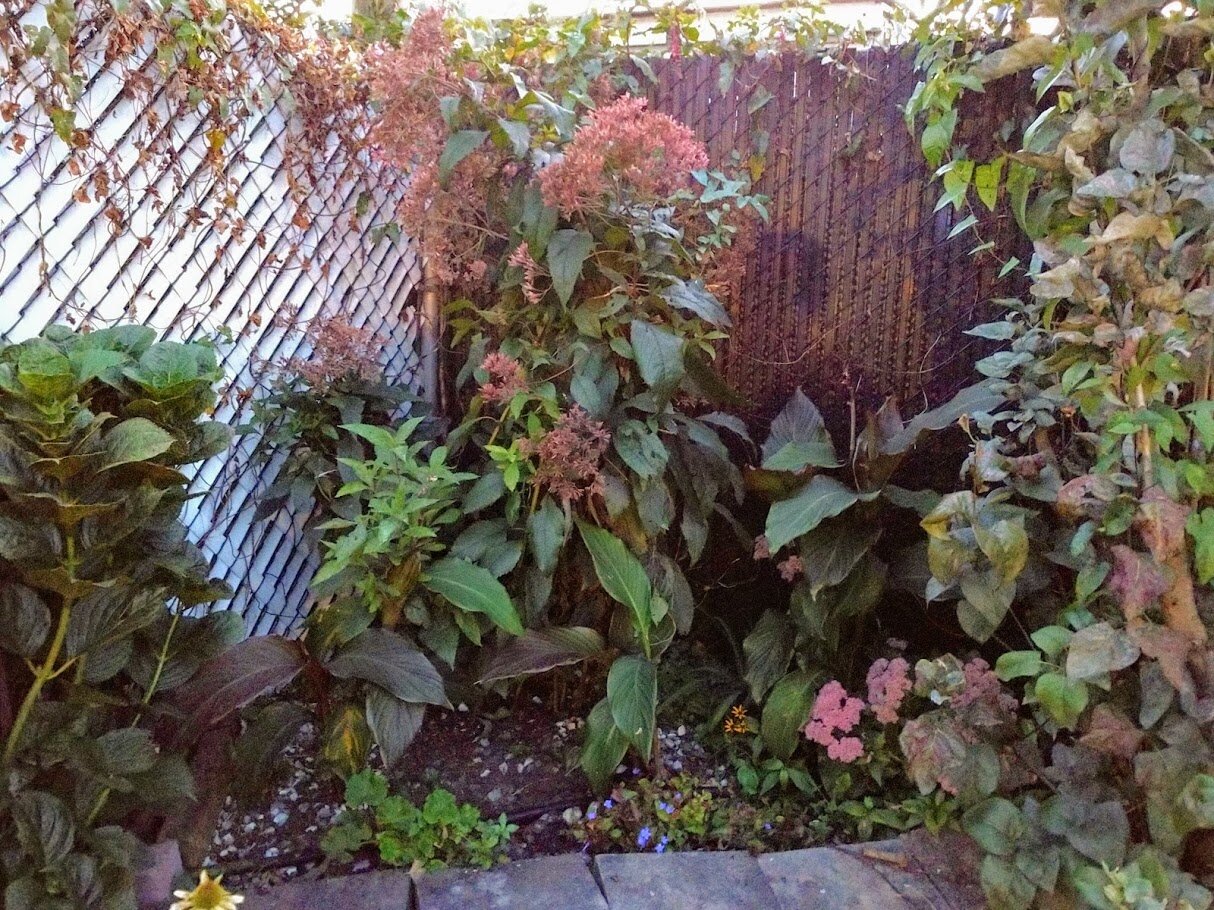Welcome to Hicksville: Mindy and the Eagle Scout Project
Mindy Marcus is a long-time Long Island resident, and a Master Gardener from C.C.E./Nassau. (Cornell Cooperative Extension) She and her husband Michael grow ornamental plants, a vegetable garden and have been adding Native plants to their gardens. They have a son Joey who in October of 2010 finished his Eagle Scout Beautification Project, at the Welcome to Hicksville Site on the corner of Levittown Parkway and Old Country Road. The family has upkept the site and adding plants and flowers since. Native plants as Joe Pye, Mountain Mint and Black-eyed Susan’s have been added to bring the pollinators and birds to the area and keep it a site of beauty and honor, to recognize all who serve.
I have lived in Long Island New York for many years. I graduated Farmingdale University with a degree in Ornamental Horticulture. At that time, they did not have a four-year program. I must say, that I like flowering plants and color. At the time Native plants and the stewardship of them were not the forefront. My garden had very few plants Native to Long Island (or even New York) in it. I want to say, for the most part, just like everyone else. Who knew? Education is a key here.
Since retiring, I became a Master Gardener through the teaching program CCE/Nassau (Cornell Cooperative Extension/Nassau). I feel that I was lucky to be able to take that program of classes and field trips and perhaps a bit prejudiced to say that I think our class was the best. I learned a lot and at the same time I met wonderful people who are gardeners and farmers and really get what growing is all about.
Now retired, I took a class called Sustainable Gardening with Professor Veracka in the Horticulture program still going on at this college. I really learned so much more about natives and why they are essential for the continuation of our wildlife, the diversity of plants, animals and insects to help prevent them from becoming extinct.
I know that education for people and future generations and working on habitat for native animals and insects will help with survival of those we share this planet with giving even smaller areas a safe location as a sanctuary for them to thrive in the future. Further important is what we have in Stewardship. Teaching people what is around them and the vital importance of having it in the present so these precious things will be here in the future. Every little bit helps to sustain and maintain an ever-decreasing population of endangered species becoming extinct; as once these things are gone, they can never be brought back.
Areas of suburbanization consist of a good amount of green fertilized lawns. This is what we know, what we have been brought up with and directed to by garden nurseries and landscapers. Some landscapers don’t know much about Natives. Many nurseries are just now starting to connect with and bring in Natives for the asking.
In a seminar given by Rusty Schmidt at East Meadow Farm for the Master Gardeners he said,
“Areas of wildlife plowed under for housing and green fertilized lawns have caused destruction to wildlife that even the lesser preserves of today are not able to sustain. Nonnative plants brought in have overpowered the natives and leave nothing for native habitat to eat on and develop.”
The learning continues as well as the definition of what is a Native and native to where. These plants are the ones that primarily help the environment when planted in areas that match their growing requirements from the locations they come from and grow best in.
This said, I visited the beautiful Teaching Gardens and the Sustainable Garden in Farmingdale University. I also jointed the Native Plant Committee at East Meadow Farm (CCE/Nassau) and I have been planting and adding Natives to my garden and son’s Eagle Scout Site located at the Hicksville Welcome Sign, corner of Levittown Parkway and Old Country Road.
My current gardens consist of the front yard, back yard and the site. Each year I have added a foot or two taking out grass and adding plants, noting that some are native, and some not, along with a “Small Space” garden of vegetables. This years golden cherry tomatoes are the sweetest I have eaten.
I have gotten away from fertilizing soil and grass unnecessarily, minimizing pesticide use and have implemented storm water containers for watering some plants. My list of natives consists of but is not limited to Joe Pye Weed, Virginia creeper, Male berry, Mountain Mint, Golden Rod, Rudbeckia hirta-Black eyed Susan’s, a twig of Red Dogwood planted there on Arbor Day and more. I now look to add the orange flower butterfly weed Asclepius tuberose.
Here I am thinking, oh wow, I have learned so much about pollinator insects, bees and butterflies, Sustainable Gardening and Natives; that I know now that these natives supply food and support for many of them including birds and animals in the area. Then, I have an “Aha” moment with the realization that I know only a little and there is always so much more to learn with so many who know so much more, willing to share it with others. This brought me to and further connections with others in a Pollinating garden in Plainview and to ReWild in Port Washington . The networking goes on and on with like minded people in hopes to keep things going, growing and continuing for us and others to come.




